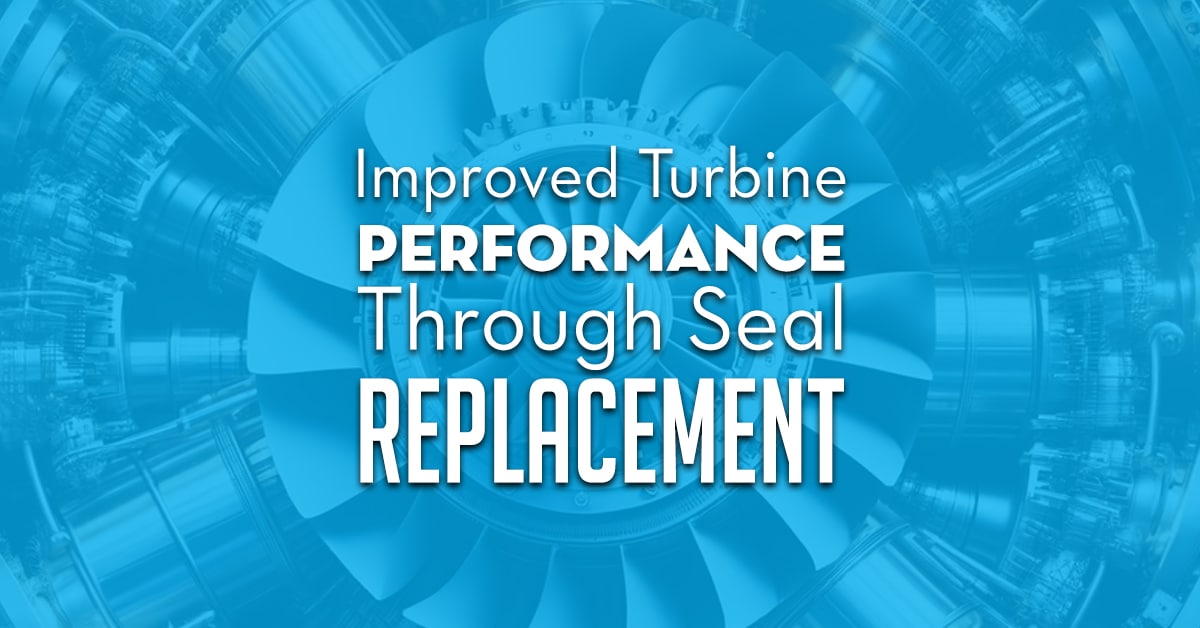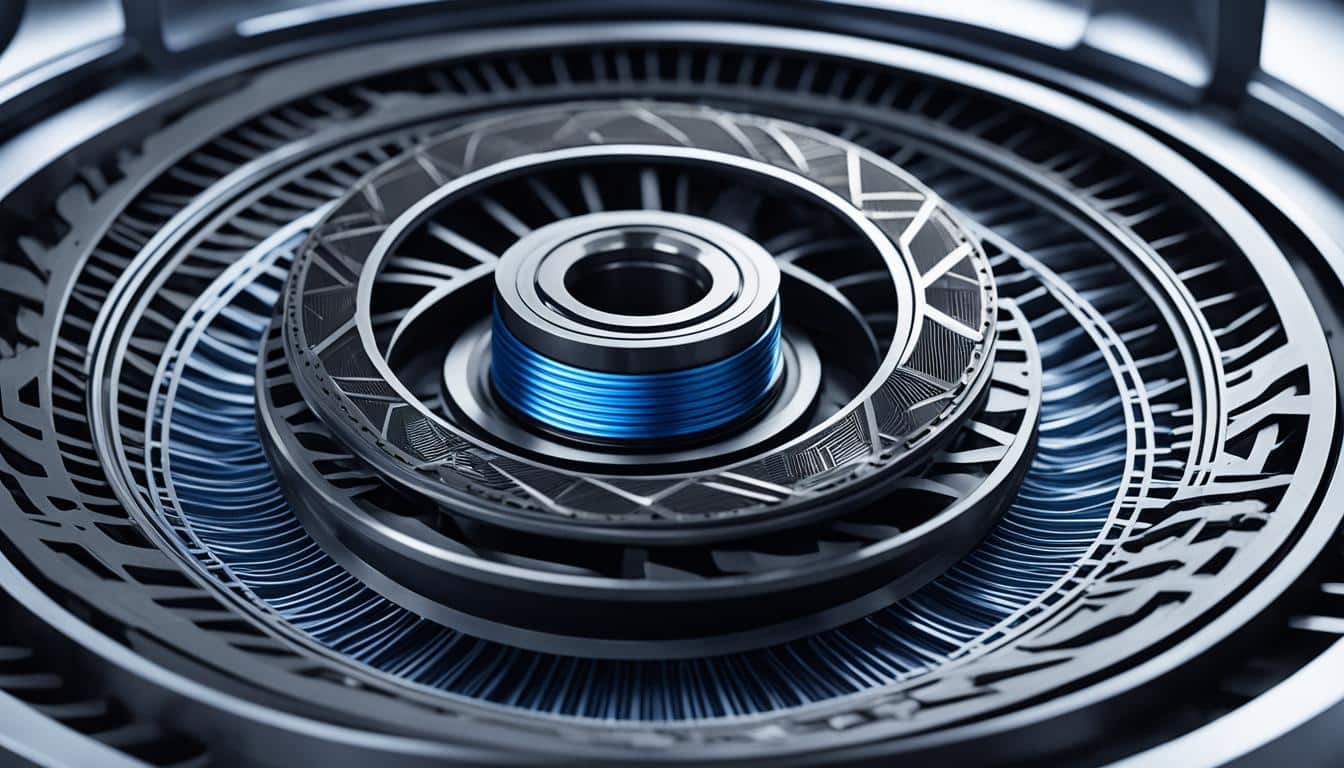Ensuring the peak operation of turbines stands as an imperative for the energy sector, with improved turbine performance through seal replacement becoming increasingly paramount. As the fulcrum of turbine efficiency, the integrity of seals cannot be overstated. Proper turbine maintenance, including regular inspections and timely turbine seal replacement, is vital for the continuous and reliable delivery of power. The strategic installation of upgraded seals significantly diminishes the risk of operational setbacks, such as unwanted reduce leakage, that can compromise turbine performance and lead to escalated operational costs.

Modern sealing solutions, specifically engineered to bolster seal efficiency, are at the forefront of technological advancements in this domain. These initiatives are not merely stopgap measures but a significant contribution to the longevity and resilience of turbine systems. In regions like the United States, where stringent standards govern every facet of power generation, recognizing the crucial role of optimal sealing is vital.
Key Takeaways
- Modern sealing solutions are pivotal for achieving improved turbine performance.
- Regular turbine maintenance and timely seal replacements can reduce operational costs.
- Turbine efficiency is closely linked to the effectiveness of seal systems in place.
- Seals are essential in maintaining integrity and reducing leakage in turbines.
- Advanced seal designs and materials provide a significant boost to seal efficiency.
Understanding the Role of Seals in Turbine Efficiency
In the realm of power generation, the integrity of a steam turbine hinges significantly on its sealing system. Turbine seals are the unsung heroes that confront the vital challenge of curbing leakage and maintaining pressure integrity under a diversity of operating conditions. These seals serve as the guardians at the gates between rotating and stationary components, ensuring that performance is not thwarted by unwanted air or steam ingress.
One must also recognize the susceptibility of seals to various forms of wear and distortion, some of which include the problematic elliptical bore and dishing distortions within diaphragms. Such deterioration can precipitate an upsurge in clearance levels, inviting a slew of efficiency losses and operational challenges, such as the dreaded turbine rubs.
Through the application of labyrinthine design paradigms, labyrinth seals crafted by APG symbolize a quantum leap in sealing technology, adroitly designed to reduce clearance and consequently amplify turbine performance across a range of operating conditions. Such seals, apart from rotating in consonance with the rotor, are equipped to secure the shroud from leaks, further proving their eminence in operational efficiency.
It is paramount to acknowledge that decreased leakage and lower emissions are direct outcomes of diligent seal maintenance, exemplifying the interconnectedness between environmental stewardship and industrial prudence.

- Periodic inspection and maintenance to prevent seal wear
- Rigorous testing to ensure optimal seal integrity
- Proactive replacement of seals to avert efficiency dips
- Utilization of custom-engineered seals tailored to specific turbine geometries
In conclusion, mastery over seal technology denotes a crucial ingredient in the recipe for sustainable turbine operation. As seal technology continues to evolve, the intersection between innovation and maintenance is where we can anticipate continuously enhanced turbine efficiency and longevity, propelling the industry towards greater heights of reliability and performance.
The Impact of Seal Technology on Operational Costs
As the energy sector continues to evolve, the importance of operational cost management via technological advancements becomes increasingly prominent. Advances in seal technology, particularly in turbine systems, play a pivotal role in achieving cost-effectiveness while ensuring improved performance. The integration of cutting-edge sealing solutions not only elevates heat rate and power output but also addresses numerous operational problems that historically have beleaguered power generation facilities.
Advanced Sealing Technologies and Heat Rate Improvements
Improving heat rate equates to optimizing fuel consumption for the same power output, which is a direct indicator of cost savings. Utilizing advanced sealing technologies significantly reduces the gap, axially and radially, between stationary components and the rotating rotor. Consequently, this precision lends itself to diminished pressure drops, elevated stage efficiency, and enhanced heat rate statistics. By effectively curtailing steam flow loss and mitigating diaphragm and interstage leakage, these sealing systems typify the strides made in turbine technology and underscore a clear path to improved efficiency and reliability.
Field Services: Enhancing Seal Performance In-Situ
Extending years of service and attaining optimal performance parameters oftentimes involve intricate in-situ operations. Field services, notably those rendered by firms like APG, provide a direct interface with the operational heart of turbines, permitting swift and precise seal replacements and reparations. The impact of such interventions cannot be overstated, as on-site engineers adeptly handle both the preservation and enhancement of turbine seals, leading to improved longevity and operational fortitude. By reducing the turnaround time for seal maintenance, these field services directly translate to less downtime, improved power generation, and notable cost savings.
Custom Sealing Solutions for Unique Turbine Conditions
Uniformity in operational conditions is an industry myth; every turbine exhibits discrete characteristics and therefore necessitates bespoke sealing solutions. Unique design and manufacture of seals, tailored to specific turbine conditions, form the core of APG’s custom service offering. This ensures an axially congruent and performance-optimized fit, dramatically boosting the reliability of turbines under diverse operational variables. The result is a marked uptick in efficiency rates and a corresponding decline in operational costs, making these custom sealing solutions an investment in the longevity and robustness of power generation assets.
Frequently Asked Questions
How does seal replacement improve turbine performance?
Seal replacement improves turbine performance by reducing leakage between rotating and stationary parts, maintaining pressure integrity, and preventing efficiency losses due to air or steam ingress. This ensures that the turbine operates at optimal conditions, which enhances overall efficiency and output.
What role do seals play in turbine efficiency?
Seals in a turbine are crucial for preventing steam and air leakage, which can severely impact the efficiency of the turbine. They maintain the pressure differential needed for the turbine to operate properly, and when they wear down or get distorted, they can significantly reduce turbine efficiency and increase operational costs.
How do advanced sealing technologies improve heat rate performance?
Advanced sealing technologies are designed to minimize leakage and maintain optimal seal clearances under various operating conditions. They reduce pressure drops within the steam path, which leads to improvements in stage efficiency and the overall heat rate performance of the turbine.
In what ways do field services contribute to turbine performance?
Field services bring certified technicians directly to the site to execute on-site seal replacements and diagnostic assessments. They help in selecting and installing the right seals, addressing leakage issues, and maintaining turbine equipment with minimal downtime, leading to improved performance and operational efficiency.
Why are custom sealing solutions important for turbines?
Custom sealing solutions are essential because each turbine may experience unique wear patterns and operating conditions. By providing tailored seals that account for individual characteristics and distortions of the turbine components, custom seals ensure that the performance gains are maximized, leading to a more efficient and reliable turbine operation.
What are the environmental benefits of regular turbine seal replacement?
Regular turbine seal replacement contributes to environmental protection by reducing toxic gas emissions that result from inefficient turbine operation. In addition, effective sealing helps in conserving energy which leads to a reduced carbon footprint of power generation processes.
How can the service life of a turbine be extended through seal maintenance?
Appropriate seal maintenance ensures that turbine components maintain their integrity and function as intended. By preventing degradation and distortion of seals, and replacing them when necessary, the service life of the turbine is extended by mitigating premature wear and tear of the components.
Can sealing technology reduce operational costs for power plants?
Yes, sealing technology can significantly reduce operational costs by improving the efficiency and reliability of the turbines, which results in lower fuel consumption and maintenance expenses. Increases in efficiency also lead to higher power output, contributing to a better economic return on investment for power plants.
Are there any specific challenges with seal replacements in gas turbines compared to steam turbines?
Gas turbines typically operate at higher temperatures and speeds than steam turbines, which can pose challenges for seal materials and design. Effective seal replacements for gas turbines require materials and technologies that can withstand these harsher conditions while maintaining sealing efficiency.
What is involved in the process of turbine seal overhaul?
The process of turbine seal overhaul involves inspecting the seals for wear and damage, measuring clearances, and replacing or repairing seals as needed. Advanced seal designs may also be installed to address specific issues such as elliptical bore distortion or to improve overall sealing performance and turbine efficiency.